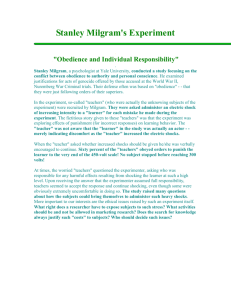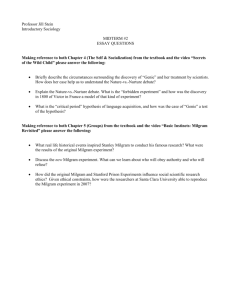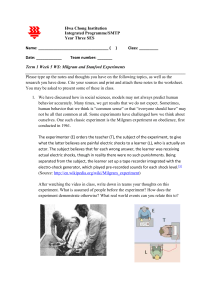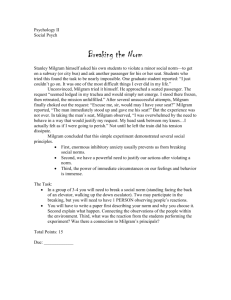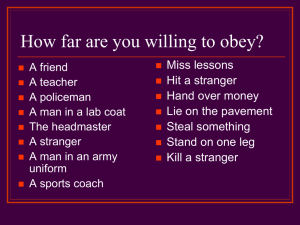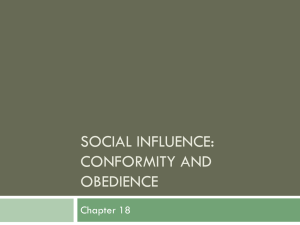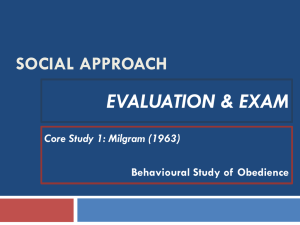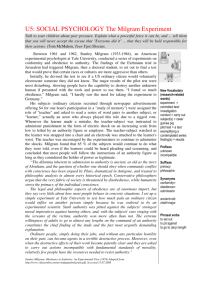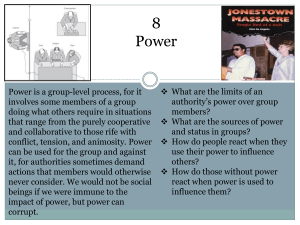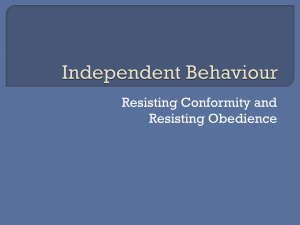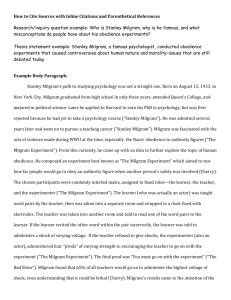Example Introductions
advertisement
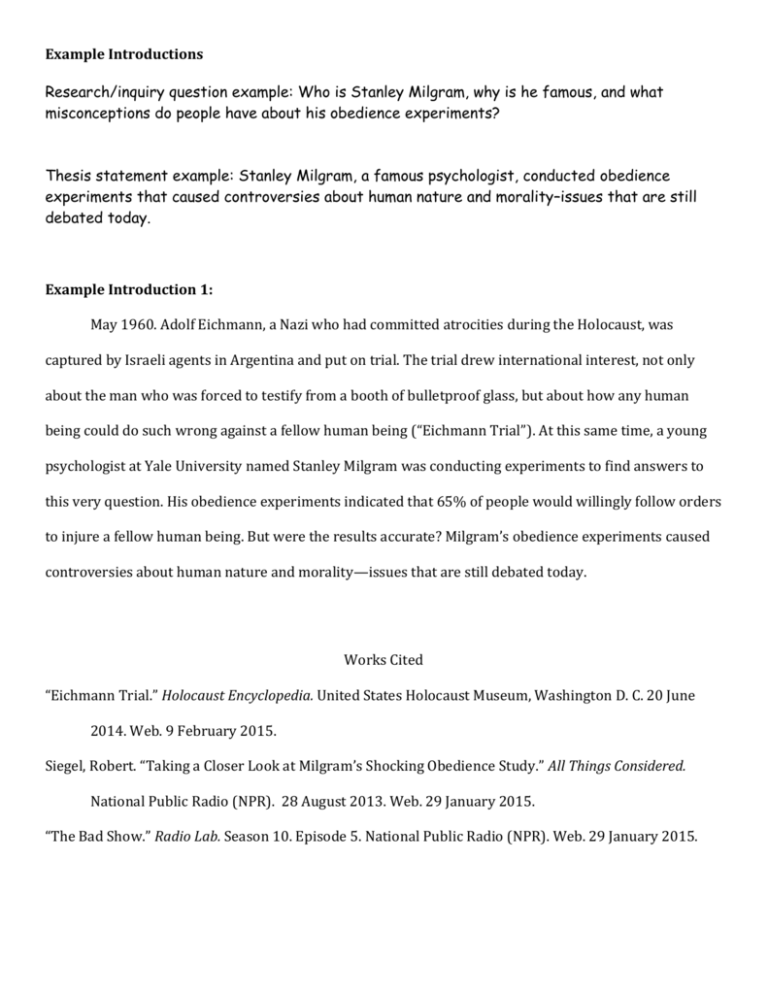
Example Introductions Research/inquiry question example: Who is Stanley Milgram, why is he famous, and what misconceptions do people have about his obedience experiments? Thesis statement example: Stanley Milgram, a famous psychologist, conducted obedience experiments that caused controversies about human nature and morality–issues that are still debated today. Example Introduction 1: May 1960. Adolf Eichmann, a Nazi who had committed atrocities during the Holocaust, was captured by Israeli agents in Argentina and put on trial. The trial drew international interest, not only about the man who was forced to testify from a booth of bulletproof glass, but about how any human being could do such wrong against a fellow human being (“Eichmann Trial”). At this same time, a young psychologist at Yale University named Stanley Milgram was conducting experiments to find answers to this very question. His obedience experiments indicated that 65% of people would willingly follow orders to injure a fellow human being. But were the results accurate? Milgram’s obedience experiments caused controversies about human nature and morality—issues that are still debated today. Works Cited “Eichmann Trial.” Holocaust Encyclopedia. United States Holocaust Museum, Washington D. C. 20 June 2014. Web. 9 February 2015. Siegel, Robert. “Taking a Closer Look at Milgram’s Shocking Obedience Study.” All Things Considered. National Public Radio (NPR). 28 August 2013. Web. 29 January 2015. “The Bad Show.” Radio Lab. Season 10. Episode 5. National Public Radio (NPR). Web. 29 January 2015. Example Introductions Research/inquiry question example: Who is Stanley Milgram, why is he famous, and what misconceptions do people have about his obedience experiments? Thesis statement example: Stanley Milgram, a famous psychologist, conducted obedience experiments that caused controversies about human nature and morality–issues that are still debated today. Example Introduction 2: Imagine an ordinary man on the street. Perhaps he is a blue collar worker, perhaps a business man. It is the 1960s and he has been invited to Yale University to help out with a psychology experiment. He is patriotic, or curious, or simply helpful, and he agrees to contribute his time to help in the advancement of science. He is told the experiment is about motivating learners, and he carefully listens to the directions: to teach the learner a series of paired words. He is told that if the learner makes a mistake repeating back the words, he must push a button that will shock the learner in order to motivate him to learn better. How far will this ordinary man go with the experiment, once he learns that the shocks are painful to the learner? This was the set up for a famous psychological experiment called The Milgram Experiment. Stanley Milgram, who became famous because of this experiment, also caused controversies about human nature and morality—issues that are still debated today. Works Cited Siegel, Robert. “Taking a Closer Look at Milgram’s Shocking Obedience Study.” All Things Considered. National Public Radio (NPR). 28 August 2013. Web. 29 January 2015. “The Bad Show.” Radio Lab. Season 10. Episode 5. National Public Radio (NPR). Web. 29 January 2015.
